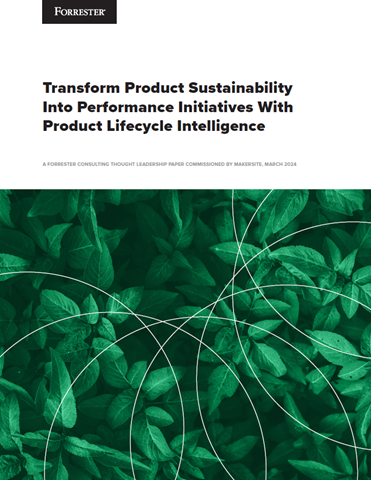Don’t wait until your brand is broken to fix it

Timothy Leonard at Brandon offers advice on how – and when – to achieve an effective rebrand
There is a common misconception around the business need for rebrands. Too often, brand owners only seriously consider the health of their brand when they’re starting to tank commercially; and then the belief seems to be that a change in fortunes will come from a redesign, rather than a focus on the brand’s story and an authentic experience of that story—one they’ve been telling since they started, probably.
But if you wait for the point where you’re losing relevance, it’s most likely you’ve not had your brand story on your radar for a while, or you’ve become out of touch with your audience’s understanding of that story. Take the ill-considered rebrands of Gap, Tropicana, or Royal Mail, for example.
A healthy brand is not made overnight; it has to be maintained over time. You can’t just rely on a logo change to turn things around. What you need is a strong bedrock that anchors your brand.
That needs to be a philosophy or ideology that can truly underpin and sustain your brand. It’s what gives it hold as our dynamic, media-rich, melting pot of a world continues to turn and evolve. Often it comes from a person—whether they founded the brand yesterday or 100 years ago—or from an original founding mindset. Take Toblerone embracing its founder’s mentality of being a triangle in a square world; or Airbnb and its mission to create a world where anyone can belong anywhere.
It also usually goes beyond a pure focus on business goals and speaks to a fundamental truth or conviction. Steve Jobs’ success didn’t come from his ambition to build the world’s richest company; it was driven by his annoyance with Microsoft’s dominance and his drive to democratise computers.
Arguably some of the most high-profile recent business failures are down to brands losing sight of an ideology and a founder’s conviction—The Body Shop being a good case in point.
But having that bedrock is not just about having an initial ambition or great founding principles. It also needs to be strengthened through a series of repeated and continuous evolutions. You constantly need to pour in cultural relevance, insights and moments to make sure it’s dynamic and able to be part of current conversations.
Living it out
A key part of this is to "live" your own brand. When brands grow, they increasingly become slaves to the spreadsheet and the boardroom. But as brand owners or managers, you need to challenge yourself to truly keep in touch with your audience.
This doesn’t just mean embedding its values in your business, although this is also crucial. You need to buy the t-shirt, go to the concert, listen to the album, and hang with your fans, especially the more senior you get within an organisation.
The minute the brand only exists on a spreadsheet for you, you’re in trouble. In fact, according to the Edelman Trust Barometer, CEO credibility is a key driver of trust in a company, with a majority of respondents stating they trust those who are engaged both with stakeholders and with society as a whole.
We’re not talking mere social listening here, but really spending time in people’s lives. IKEA founder Ingvar Kamprad was the master of this—immersing himself in the markets of China and the streets of New York, always looking to understand. It is a personification of why the brand is so good at connecting with consumers today, through a witty turn of voice, or well-timed ads that bring a smile to everyone’s mind. It recognises the moments and cultural references that chime with its audience.
This needs to be part of your day, built into your process. Attend focus groups, visit the store, the factory floor. Stop yourself orbiting and get stuck in. It is part of what keeps companies such as Bumble, Uber or Airbnb so consistently relevant—leaders that are close to the people their brand serves and constantly advocate for them.
Keeping it fresh
Brand owners also need to challenge themselves to keep their approach fresh. Research is great for optimising marketing metrics, but it is also a chance to check in regularly with your audience. Figure out what drives them, what they love and hate about you.
True strategy is not just asking your audience about what you should do, but about keeping close and understanding the role you play in people’s lives. It’s not about chasing every fad, hype, or dollar sign, but about being part of the conversation and getting involved where appropriate.
Bring surprise and delight, show you ‘get’ your audience rather than talk down to them. By understanding the community you serve and the context in which you play, the creative opportunities become clear and have relevance.
A great example of this was Mountain Dew’s ‘Dew Bottle Tool’—a bottle cap that helped skaters repair their boards. It demonstrated an understanding of the brand’s audience and their lifestyles. Even if you didn’t use it, it demonstrated thoughtfulness—a nod and wink to the audience in a knowing, not telling way.
Considering future trends and touchpoints, such as the constantly growing importance of social media, is another crucial part to this. You can’t strengthen your bedrock to engage with a modern audience without pouring in a healthy dose of now and next.
According to a McKinsey report, companies that effectively use digital technologies are more likely to be market leaders in their respective industries. Beauty retailer Sephora is master at this, with interactive social media campaigns, augmented reality features and influencer partnerships enhancing the brand on a daily basis.
Don’t be scared to correct course
Finally, make sure you regularly check in and reappraise your bedrock—revisit your guiding ideology and course-correct if needed. It’s so easy to lose sight of what can truly drive your brand, but if you don’t keep your eye on it, you can run out of steam.
The best brands do this. Starbucks refocusing on nurturing the human spirit one cup of coffee at a time. Old Spice repositioning itself as the quintessential grooming brand for men and women – tapping into a cultural moment with wit and style through its ‘The Man Your Man Could Smell Like’. Or a personal favourite: Cadbury’s shift from a product truth to a human truth-inspired idea: “There’s a glass and a half in everyone”. Boom!
They succeed by being awake to the importance of the bedrock, as well as the cultural shifts and insights that give it longevity and relevance. It’s a powerful equation that is so much more effective than a kneejerk change of identity could ever be.
Timothy Leonard is Head of Strategy at Brandon
Main image courtesy of iStockPhoto.com and tumsasedgars

Business Reporter Team
Related Articles
Most Viewed
23-29 Hendon Lane, London, N3 1RT
23-29 Hendon Lane, London, N3 1RT
020 8349 4363
© 2024, Lyonsdown Limited. Business Reporter® is a registered trademark of Lyonsdown Ltd. VAT registration number: 830519543
Join the Business Reporter community today and get access to all our newsletters, and our full library of talk show episodes
Join the Business Reporter community today and get access to all our newsletters, and our full library of talk show episodes





